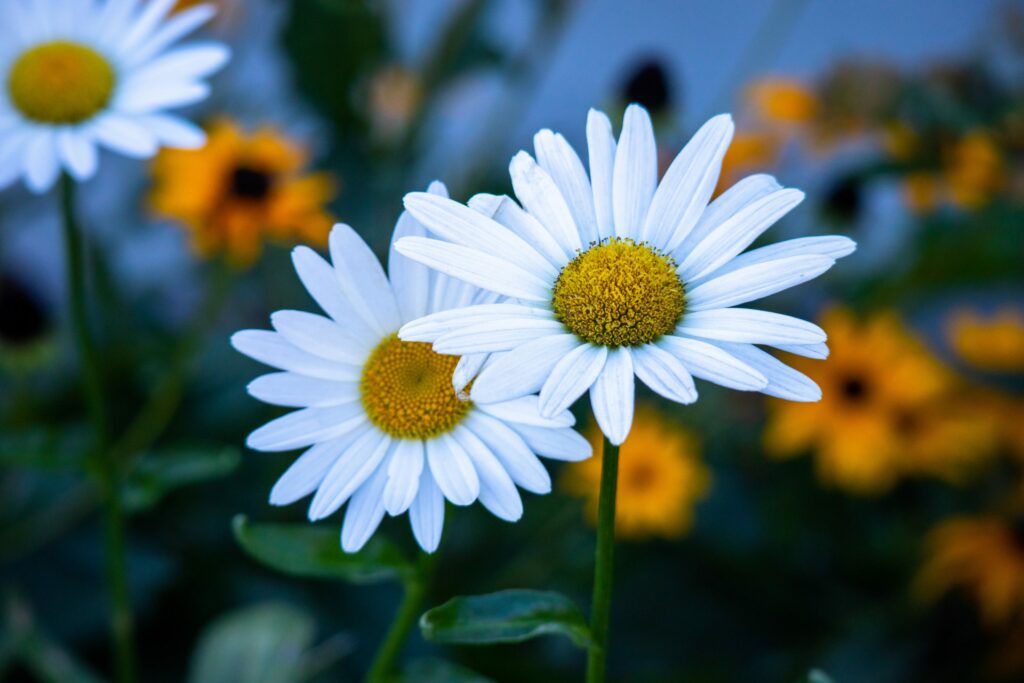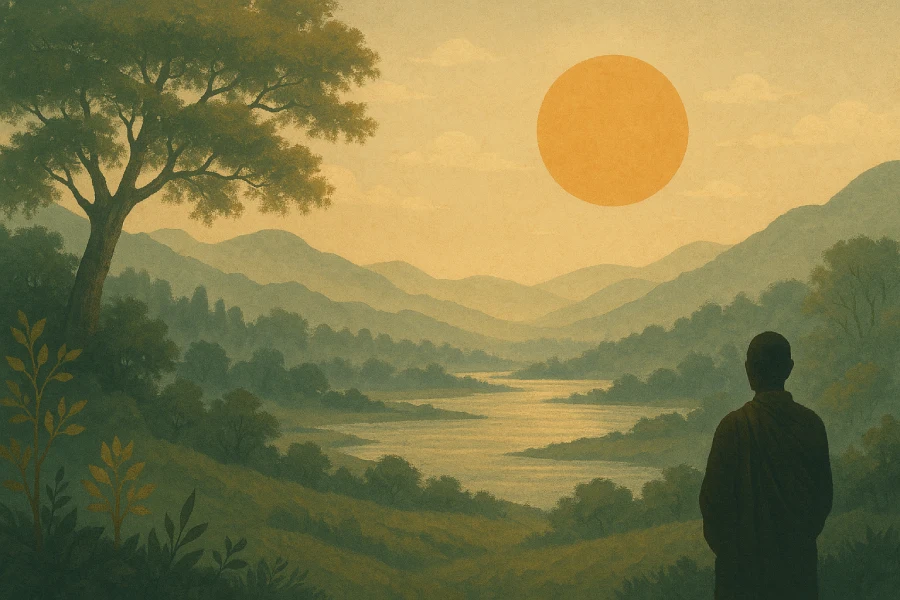Let us consider the unbounded sky or mirror-like nature of consciousness. We need to be practical. Our first task is to learn to distinguish the mirror-like nature of consciousness from its content, our sense perceptions and thought. When we learn to distinguish consciousness from the states and experiences that color it, we are freed from reactioning to each passing state.
While studying Buddhism in college, I tried a little meditation on my own. But it was unfamiliar and I was unsuccessful because I didn’t know what I was doing. It wasn’t that I was afraid of silence or of some terrible darkness that I would find inside, though these are common misunderstandings of meditation. It was that my body would get uncomfortable and my mind would spin out in a million directions. When I got Ajahn Chah’s teaching, the practice became gradually clearer. He taught me to relax and feel my breath carefully, which helped focus and quiet my mind. Then he taught me just to mindfully notice the stream of thoughts and sensations without reacting to them as a problem. This took some practice.
Finally he taught the most important lesson, to rest in consciousness itself. As his own teacher Ajahn Mun explains, “We become the witnessing of experience, abiding in pure consciousness or awareness.” He goes on, “We can notice the distinction between consciousness and all the transient states and experiences that arise and pass away within it. When we do not understand this point, we take each of the passing states to be real. But when changing conditions such as happiness and unhappiness are seen for what they are, we find the way to peace. Most people lump everything together as the mind itself, without distinguishing between the temporary states of mind and the knowing of them. If you can rest in the knowing, the pure consciousness, there’s not much more to do.”
Does resting in consciousness mean we are simply checking out of the world, or withdrawing into navel gazing? Not at all. Resting in the knowing is not the same as detachment. When I look back at my own life I can see my struggles to discover this truth. Because of the conflict and unpredictable violence in my family, there were many times I wanted to run away but couldn’t. To cope with the trauma, at times I became depressed, angry or cynical. But as a primary protection, I developed the capacity to detach myself from what was happening. Detachment came naturally to me. I used it to become peaceful within myself and to try to calm those around me. Of course, these patterns persist and now I do it for a living.
So when I began Buddhist practice, shifting my attention to rest in consciousness felt familiar, natural. It seemed similar to my strategy of detachment. But gradually I discovered how wrong I was. My detachment had been a withdrawal from the pain and conflict into a protective shell. It was more like indifference. In Buddhist psychology indifference is called the “near enemy” to true openness and equanimity, a misguided imitation. To rest in consciousness, I had to unlearn this defensive detachment and learn to feel everything. I had to allow myself to recognize and experience the feelings and thoughts, the conflicts, the unpredictability of life in order to learn that I could trust the openness of consciousness itself. Ajahn Chah invited us to rest in consciousness and allow every experience in a fearless way. To rest in consciousness is the opposite of contraction and fear. When we rest in consciousness we become unafraid of the changing conditions of life.
In the monastery Ajahn Chah would point us back to rest in the pure knowing, consciousness itself. Sometimes he would notice that we were caught up in a state of worry or anger or doubt or sorrow. He would smile with amusement and urge us to inquire, Who is doubting? Who is angry? Can you rest in the consciousness that is aware of these states? Sometimes he would instruct us to sit at the side of a person who was dying, to be particularly aware of the mysterious moment when consciousness leaves and a person full of life turns into a lifeless corpse. Sometimes he would say, “If you are lost in the forest, that is not really being lost. You are really lost if you forget who you are.”
This knowing or pure consciousness is called by many names, all of which point to our timeless essence. Ajahn Chah and the forest monks of Thailand speak of it as the Original Mind or the One Who Knows. In Tibetan Buddhism it is referred to as Rigpa, silent and intelligent. In Zen it is called the mind ground or mind essence. The Hindu non-dual tradition speaks of this as the timeless witness. While these teachings may sound abstract, they are quite practical. To understand them we can simply notice the two distinct dimensions to our life, the ever-changing flow of experiences, and that which knows the experiences.
Perhaps we can better understand this through a story of a Palestinian named Salam, one of my good friends. I met Salam when I was doing some teaching for the hospices of the Bay Area. He was able to sit with the dying because he had no fear of death. In the late 1960’s and 70’s Salam lived in Jerusalem as an activist and a journalist. Because he was writing about creating a Palestinian capital in east Jerusalem and the establishment of a Palestinian state, he was regularly arrested. He spent nearly six years in Israeli prisons. He was frequently interrogated and periodically beaten and tortured. This happens on every side in war.
One afternoon after he had been badly beaten, his body was lying on the floor of the prison and he was being kicked by a particularly cruel guard. Blood poured out of his mouth, and as the police report later stated, the authorities believed he had died.
He remembers the pain of being beaten. Then, as is often reported by accident and torture victims, he felt his consciousness leave his body and float up to the ceiling. At first it was peaceful and still, like in a silent movie, as he watched his own body lying below being kicked. It was so peaceful he didn’t know what all the fuss was about. And then Salam described how, in a remarkable way, his consciousness expanded further. He knew it was his body lying below, but now he felt he was also the boot kicking the body. He was also the peeling green paint on the prison walls, and the goat whose bleat could be heard outside, he was the dirt under the guard’s fingernails—he was all of it and the eternal consciousness of it all with no separation. Being everything, he could never die. All his fears had vanished. He realized that death was an illusion. A well-being and joy beyond description opened in him. And then a spontaneous laughter arose at the astonishing folly of humans, believing we are separate, clinging to nations and making war.
Two days later, as Salam describes it, he came back to consciousness in a bruised and beaten body on the floor of a cell, without fear or remorse, just amazement. His experience changed his whole sense of life and death. He refused to continue to participate in any form of conflict. When he was released, he married a Jewish woman and had Palestinian-Jewish children. That, he said, was his answer to the misguided madness of the world.
This excerpt is taken from the book, “The Wise Heart”






